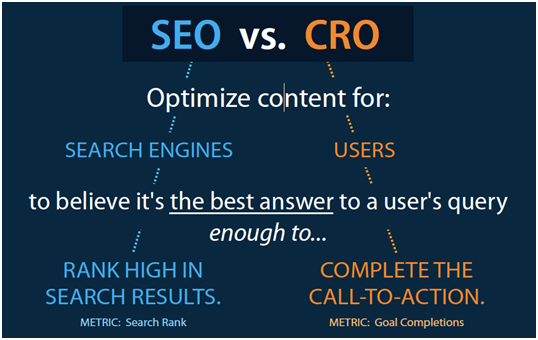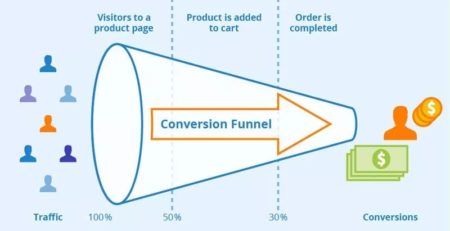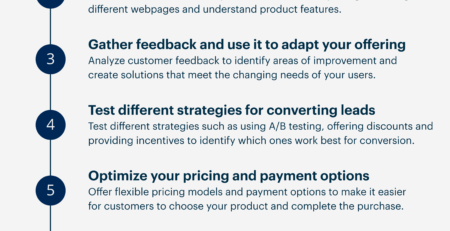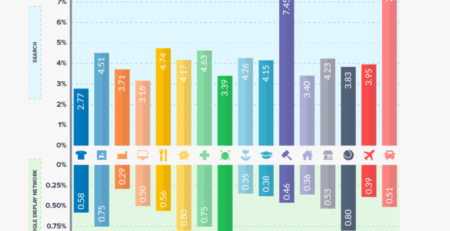Is Conversion Rate Optimization Part Of Seo?
Wondering if Conversion Rate Optimization (CRO) is part of SEO? Well, let’s dive in and find out!
Now, you might be wondering, what exactly is Conversion Rate Optimization? Simply put, it’s the process of fine-tuning your website to increase the number of visitors who take a desired action, like making a purchase or filling out a form.
But here’s the twist: CRO and SEO go hand in hand. Yes, they might sound like two separate things, but they actually work together to boost your online success. So, let’s unravel the connection between Conversion Rate Optimization and SEO, and discover how they can work wonders for your website!
Is Conversion Rate Optimization Part of SEO?
Conversion Rate Optimization (CRO) and Search Engine Optimization (SEO) are two essential strategies in digital marketing. While SEO focuses on increasing organic traffic and improving website visibility on search engine result pages, CRO aims to optimize the website’s user experience and encourage visitors to take desired actions. So, is CRO part of SEO? Let’s delve into the details to understand the relationship between these two strategies and how they complement each other.
The Intersection of CRO and SEO
CRO and SEO are closely related and should ideally be integrated into a comprehensive marketing strategy. Both share a common goal of driving more conversions, albeit through different approaches. SEO primarily focuses on attracting relevant organic traffic to your website, while CRO ensures that the website is optimized to convert that traffic into leads, sales, or other desired actions.
To put it simply, SEO can bring visitors to your website, but CRO ensures that they stay, engage, and convert. Through CRO techniques such as A/B testing, usability analysis, and data-driven optimization, marketers can identify and implement changes that improve conversion rates. These changes could range from optimizing landing page designs, improving site speed, simplifying the checkout process, or enhancing the overall user experience.
By combining SEO and CRO, businesses can create a holistic approach that maximizes the return on investment (ROI) for their marketing efforts. SEO drives traffic, while CRO maximizes the value of that traffic, leading to improved rankings, increased conversions, and ultimately higher revenue.
The Benefits of Integrating CRO and SEO
1. Increased Conversion Rates: By optimizing the website for conversions, businesses can increase their conversion rates, leading to higher customer acquisition and revenue generation.
2. Improved User Experience: CRO techniques help improve the user experience by analyzing user behavior, identifying pain points, and making necessary adjustments to streamline the path to conversion.
3. Enhanced Keyword Targeting: By implementing CRO strategies, businesses can gain insights into which keywords and landing pages are most effective in driving conversions. This data can be used to refine SEO strategies and target high-converting keywords more effectively.
SEO vs. CRO: Finding the Balance
While SEO and CRO go hand in hand, it’s essential to strike the right balance between the two strategies. Focusing solely on SEO without considering user experience and conversion optimization may lead to high volumes of traffic but low conversion rates.
Conversely, prioritizing CRO without optimizing for search engines may limit the potential to attract new visitors. Therefore, businesses must adopt an integrated approach that addresses both SEO and CRO to achieve optimal results.
Consider conducting regular SEO audits to ensure your website is optimized for search engines, while also implementing CRO techniques to continuously test and improve conversion rates. Prioritize user experience, website speed, mobile optimization, and other factors that can positively impact both SEO and CRO.
Tips for Successful Integration
1. Analyze and Understand Your Target Audience: Gain insights into your audience’s preferences, pain points, and behavior to create targeted SEO and CRO strategies.
2. Conduct Regular A/B Testing: Test different variations of your website, landing pages, and CTAs to identify what resonates best with your audience and drives higher conversions.
3. Optimize for Mobile: With the increasing use of mobile devices, ensure your website is mobile-friendly and optimized for a seamless user experience across all devices.
The Bottom Line
Conversion Rate Optimization (CRO) and Search Engine Optimization (SEO) are two critical components of a successful digital marketing strategy. While they are distinct strategies, they are interconnected and complement each other to maximize website performance and drive conversions. By integrating SEO and CRO, businesses can ensure that they not only attract relevant traffic but also optimize the user experience and increase conversion rates. Striking the right balance between these two strategies is key to unlocking the full potential of your online presence.
Key Takeaways: Is Conversion Rate Optimization Part of SEO?
- Conversion rate optimization (CRO) is an important aspect of SEO.
- CRO focuses on improving the percentage of website visitors who take desired actions.
- By increasing conversions, CRO helps boost organic rankings and improves user experience.
- SEO and CRO work hand in hand to optimize websites for both search engines and users.
- Implementing CRO techniques can lead to higher visibility, traffic, and revenue.
Frequently Asked Questions
1. Why is conversion rate optimization important for SEO?
Conversion rate optimization (CRO) is an essential part of SEO because it focuses on improving the overall user experience and increasing the likelihood of converting visitors into customers. When your website is optimized for conversion, it not only benefits your SEO efforts by increasing user engagement and reducing bounce rates, but it also drives more qualified traffic to your website.
By incorporating CRO techniques into your SEO strategy, such as optimizing landing pages, improving website speed, and enhancing call-to-action elements, you can attract more organic traffic and ensure that visitors have a seamless experience that encourages them to convert. Ultimately, this leads to higher rankings on search engine results pages and a greater return on investment.
2. How can I incorporate conversion rate optimization into my SEO strategy?
There are several ways to incorporate conversion rate optimization (CRO) into your SEO strategy. Firstly, analyze your website’s user experience and identify any pain points or areas for improvement. This can include optimizing page load times, simplifying navigation, and making sure your website is mobile-friendly.
Next, conduct thorough keyword research to ensure that the content on your website aligns with the search intent of your target audience. By creating high-quality, relevant content that addresses users’ needs and desires, you increase the chances of conversions. Additionally, optimize your call-to-action elements by making them eye-catching, persuasive, and easily accessible to encourage visitors to take action.
3. Can CRO help improve my website’s organic search rankings?
Yes, conversion rate optimization (CRO) can indeed help improve your website’s organic search rankings. When users have a positive experience on your website and are more likely to convert, search engines like Google take notice. User signals, such as longer time spent on site, lower bounce rates, and increased engagement, are all factors that search engines use to determine the quality and relevance of your website.
By implementing CRO techniques and continuously improving your website’s user experience, you not only increase the chances of conversions but also enhance your website’s overall quality in the eyes of search engines. This can lead to higher organic search rankings, improved visibility, and a greater chance of attracting qualified organic traffic.
4. Are there any risks associated with implementing conversion rate optimization?
While conversion rate optimization (CRO) has numerous benefits, it is important to approach it with caution and avoid certain risks. One risk is making drastic or numerous changes to your website without proper testing. It’s crucial to conduct A/B testing and gather data before implementing any significant changes to your site to ensure you’re making informed decisions.
Additionally, it’s important to strike a balance between optimizing for conversions and maintaining a positive user experience. Over-optimization can sometimes result in a website that feels spammy or overly aggressive, which can harm your brand’s reputation and lead to negative user experiences.
5. Is conversion rate optimization a one-time effort or an ongoing process?
Conversion rate optimization (CRO) should be treated as an ongoing process rather than a one-time effort. Consumer behaviors, preferences, and market trends evolve over time, so it’s important to continually monitor and adapt your CRO strategy to stay ahead.
Regularly analyze user behavior, track key metrics, and make adjustments based on the data you collect. Continuously experiment with different approaches, test new ideas, and implement improvements to ensure your website is always optimized for conversions. By consistently refining and optimizing your CRO efforts, you can maximize your SEO outcomes and maintain a competitive edge in the online landscape.
What is Conversion Rate Optimization (CRO)?
Summary
So, to sum it up, conversion rate optimization (CRO) is an important part of SEO. CRO helps improve the percentage of website visitors who take a desired action, like making a purchase or signing up for a newsletter. By focusing on CRO, businesses can increase their chances of turning visitors into customers and boosting their overall success online. It’s all about making the most of your website traffic and giving visitors a great user experience. So remember, when it comes to SEO, don’t forget about CRO!











